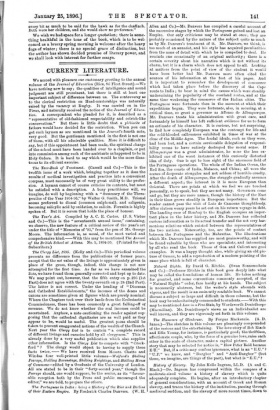The Clergy List, 1896. (Kelly and Co.)—This periodical volume presents
no difference from the publications of former years, except that the net value of the livings is approximately given in place of the gross, though, indeed, this change is not now attempted for the first time. As far as we have examined the lists, we have found them generally corrected and kept up to date. We may point out, however, that the fifth entry on p. 295 (1st Part) does not agree with the twenty-seventh on p. 24 (2nd Part). The latter is not correct. Under the heading of " Diocesan and Cathedral Establishments," the incomes of the deans and canons are sometimes given at figures which are purely nominal. Where the Chapters took over their lands from the Ecclesiastical Commissioners, there has been commonly a great falling-off of revenue. We do not know whether the real incomes could be ascertained. Anyhow, a note cautioning the reader against sup- posing that the cathedral dignitaries are as well paid as they appear to be, would be useful. The greatest pains should be taken to prevent exaggerated notions of the wealth of the Church. Next year the Clergy List is to contain " a complete record of different livings and curacies held by all clergymen." This is already done by a very useful publication which also supplies other information. Is the Clergy List to compete with "Crock- ford " ? The clergy would object to having to supply these facts twice. — We have received from Messrs. Chatto and Windus four well-printed little volumes—Walford's Shilling .Peerage, Shilling Baronetage, Shilling Enightage, and Shilling House -of Commons—edited by a Graduate of the University of London. All are stated to be in their " forty-second year," though the Peerage should, one would suppose, be the senior, as its " favour- able reception both by the Press and public encouraged the editor," we are told, to prepare the others.


















































 Previous page
Previous page